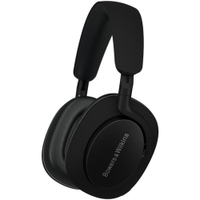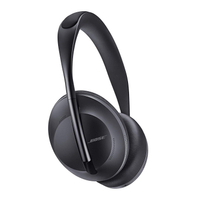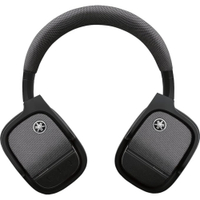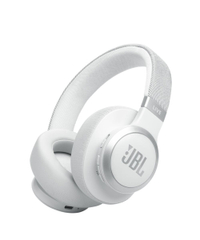The best noise-canceling headphones of 2025: Tested and reviewed
These are the very best noise-canceling headphones we've tested
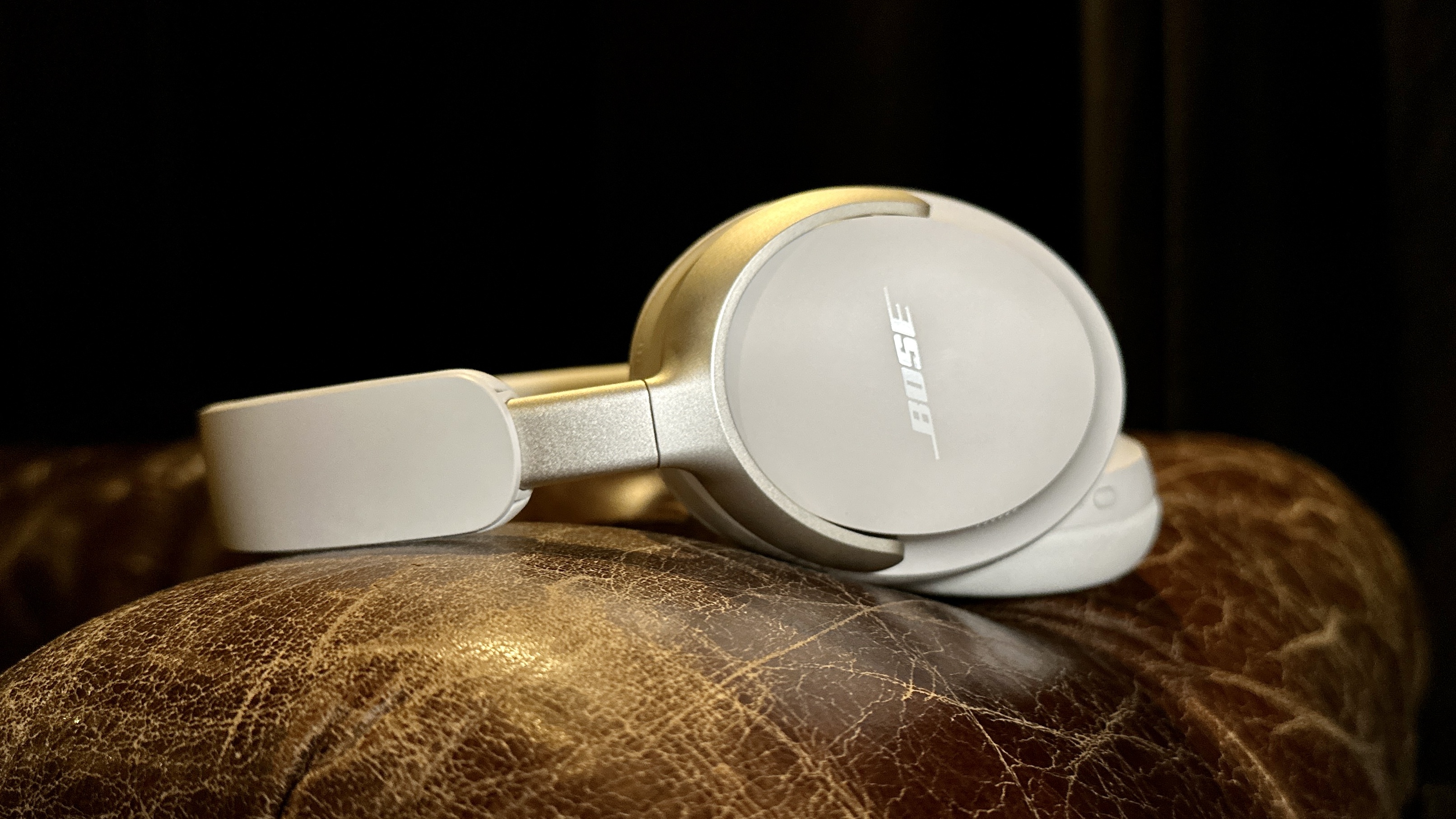
The endless wirr of airplane engines, the rumble of bus tires, the screeching of underground train brakes — the only thing that makes them all more bearable is a pair of the best noise-canceling headphones. Closing you off from the outside world and cocooning you in your music, they’re an essential part of any journey. Working out what pair of headphones to get, however, is often a very difficult task indeed.
With the help of the Tom's Guide reviews team, we test the best noise canceling headphones so that we can find the best for you. We've spent hundreds of hours this year alone, putting them through their paces and evaluating their sound quality, comfort and most importantly, how much noise they block with their active noise canceling.
My top pick are the Bose QuietComfort Ultra headphones. They don't just sound epic, but their noise canceling is the best I've ever seen. I've walked past busy building sites, on trains next to wailing babies and children and sat on rumbling buses with no noise coming through to disturb my peace and quiet. They've become my go-to headphones for when I leave the house. If those are little bit too much money for you, then there are the excellent JLab JBuds Lux ANC which bring some great sound quality to a much lower price point.
These are the best noise canceling headphones you can buy right now.
The Quick List
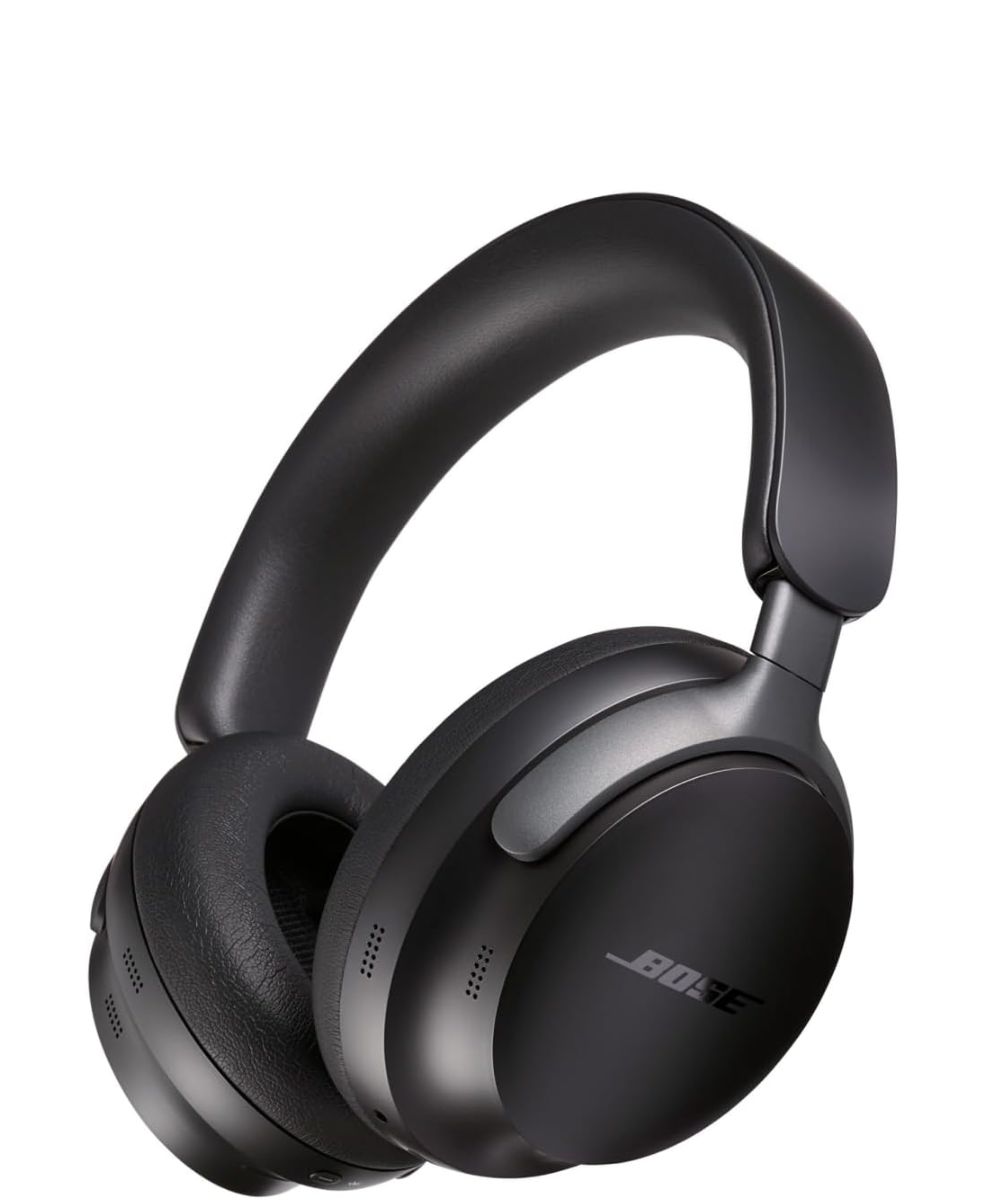
Price ★★★☆☆
Sound ★★★★☆
ANC ★★★★★
With Bose’s top-of-the-line noise canceling on board, the QuietComfort Ultra headphones block out more noise than anything else out there. They’re incredibly comfortable as well, and the sound is amongst the best around.
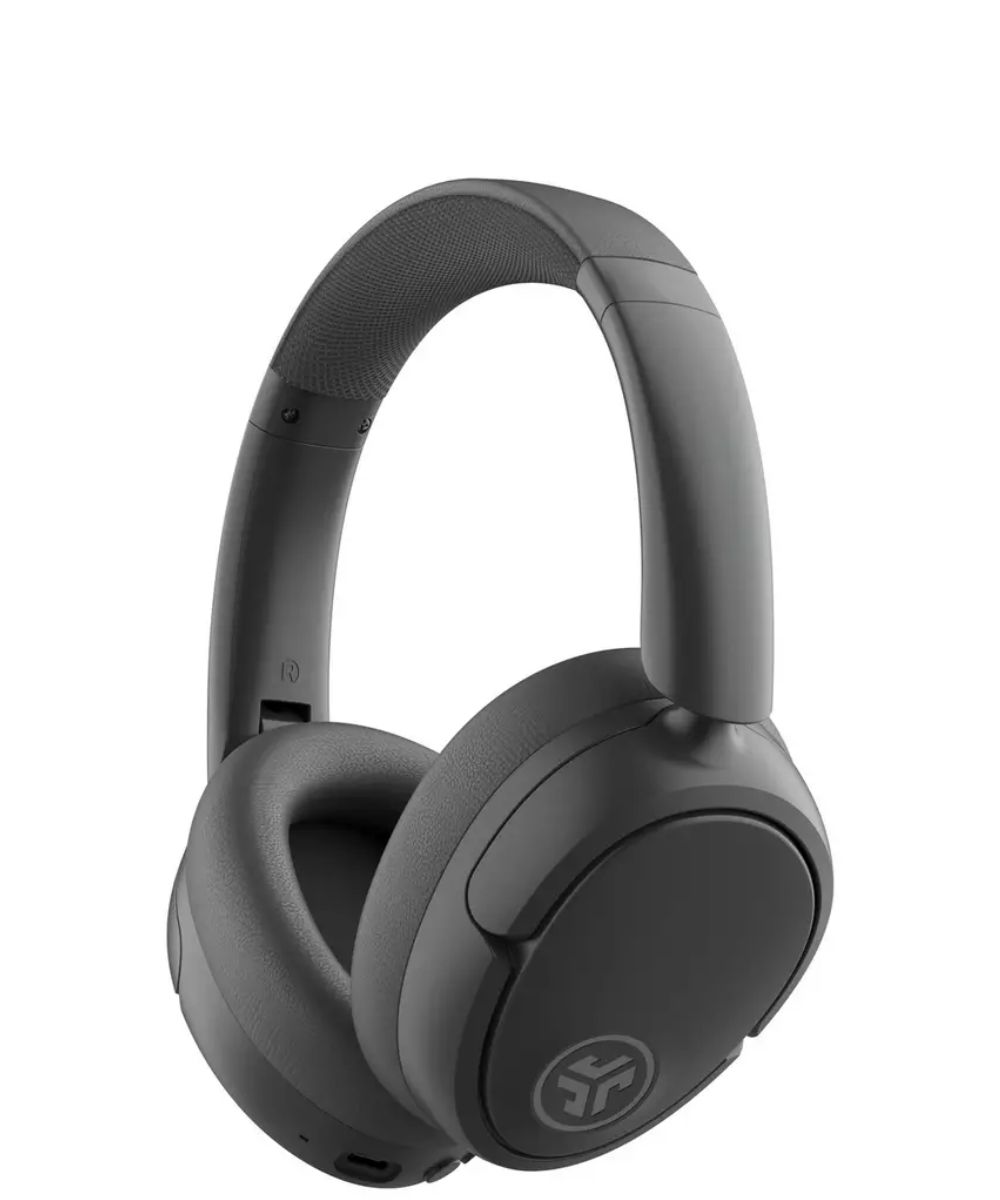
Price ★★★★★
Sound ★★★★☆
ANC ★★★★☆
Costing just $79, the Lux brings some flagship features to an excellent price point. There might not be a carrying case in the box, but you get great sound quality, top-notch battery life, and surprisingly good ANC as a trade-off.
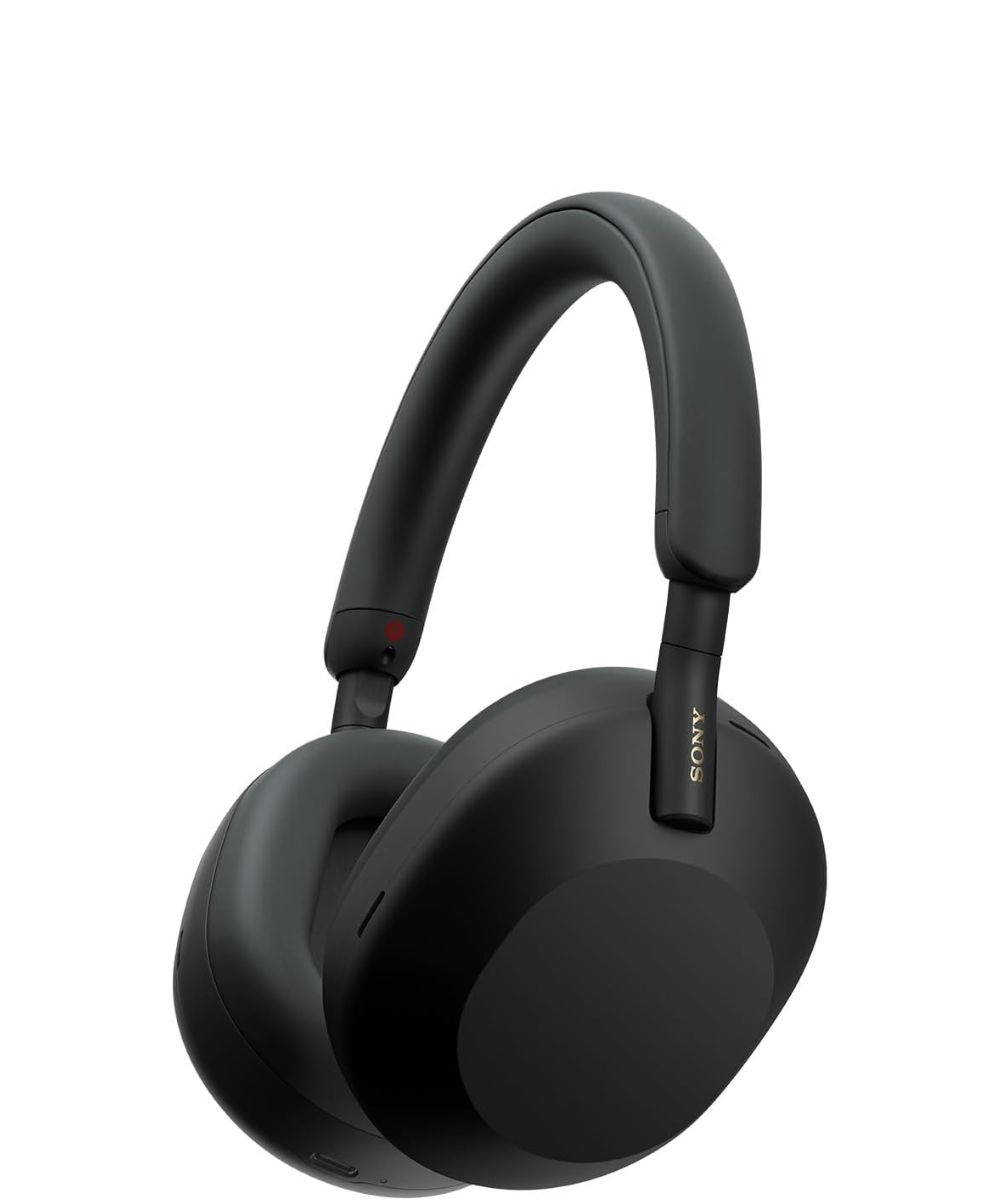
Price ★★★☆☆
Sound ★★★★★
ANC ★★★★★
The Sony’s almost manage to beat out the Bose alternative, but the noise canceling just isn’t quite as good. They sound incredible though, and Sony’s sound profile is likely going to please more users.
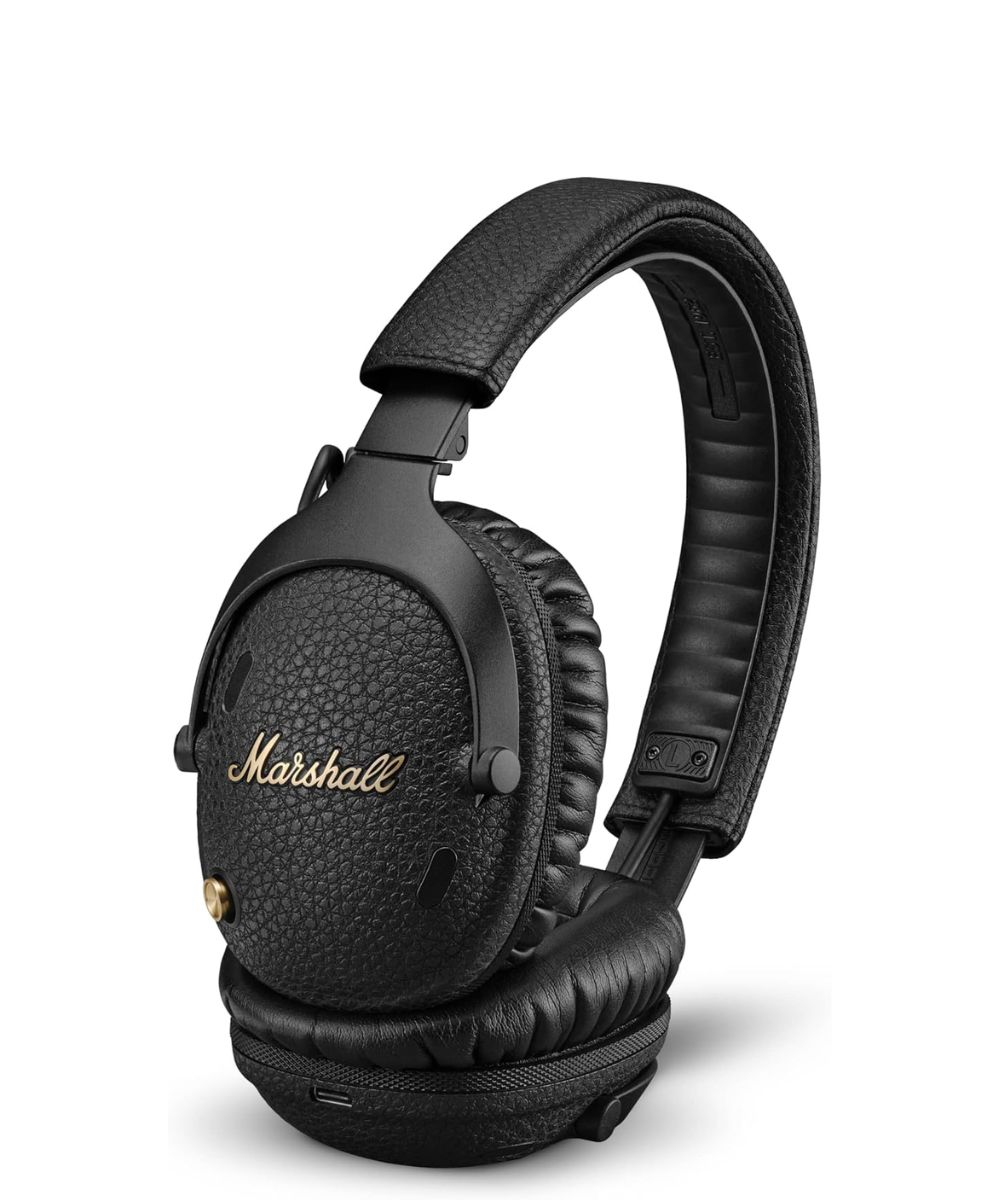
Price ★★★★☆
Sound ★★★★★
ANC ★★★★☆
Oozing style, Marshall’s latest noise-canceling cans also have some of the best battery life we’ve ever seen. With ANC turned on they last for 70 hours, so you’ll be reaching for the charging lead far less often.
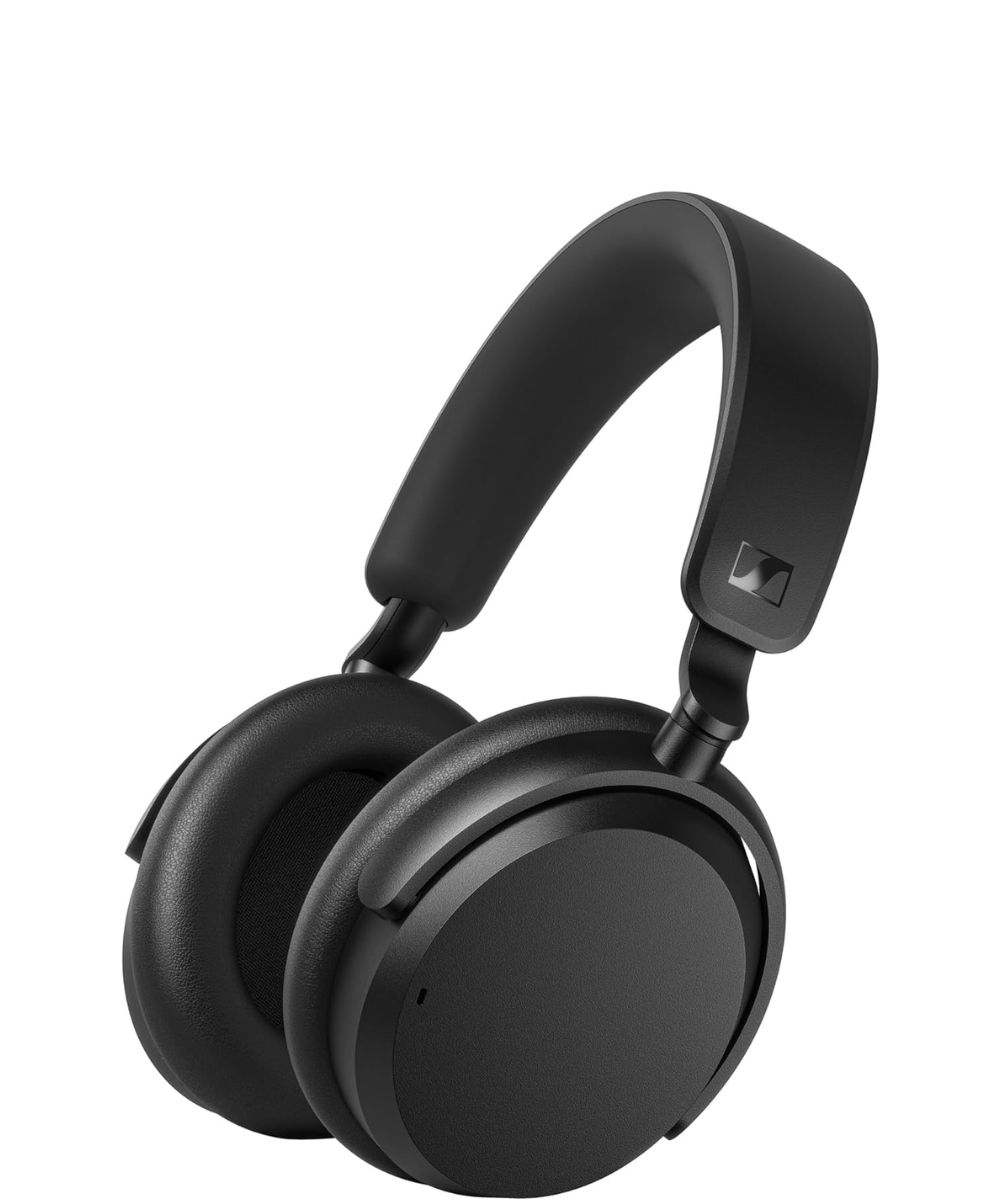
Price ★★★★★
Sound ★★★★★
ANC ★★★★☆
Sennheiser's Accentum are a great pair of headphones that don't break the bank. They've got great noise canceling, excellent sound quality and a comfortable fit.
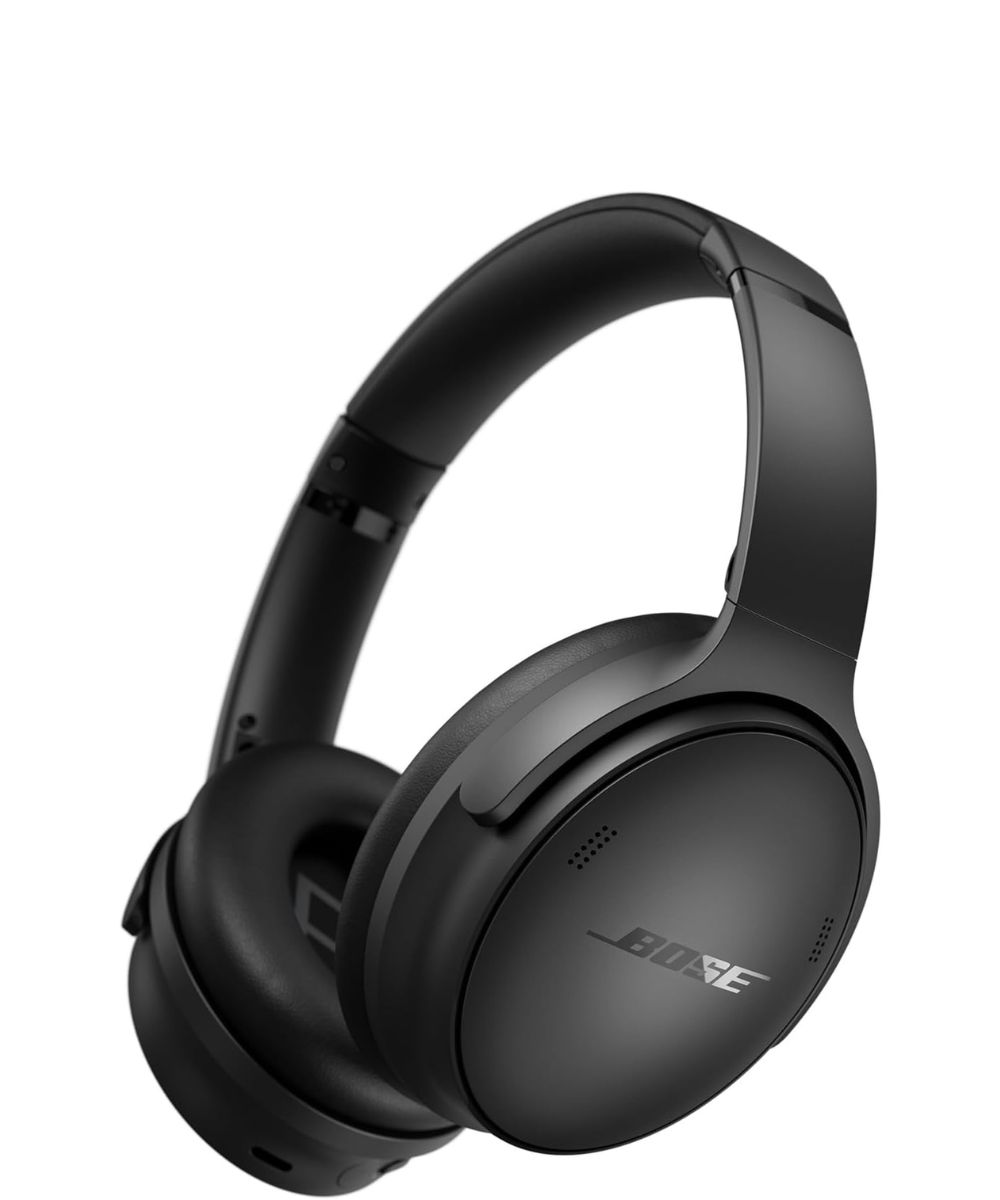
Price ★★★★☆
Sound ★★★★☆
ANC ★★★★★
A more affordable Bose noise canceling option that replaced the QC45 in October 2023, the more affordable, foldable design makes these great for traveling and boast excellent ANC and great comfort.
Next 3 models
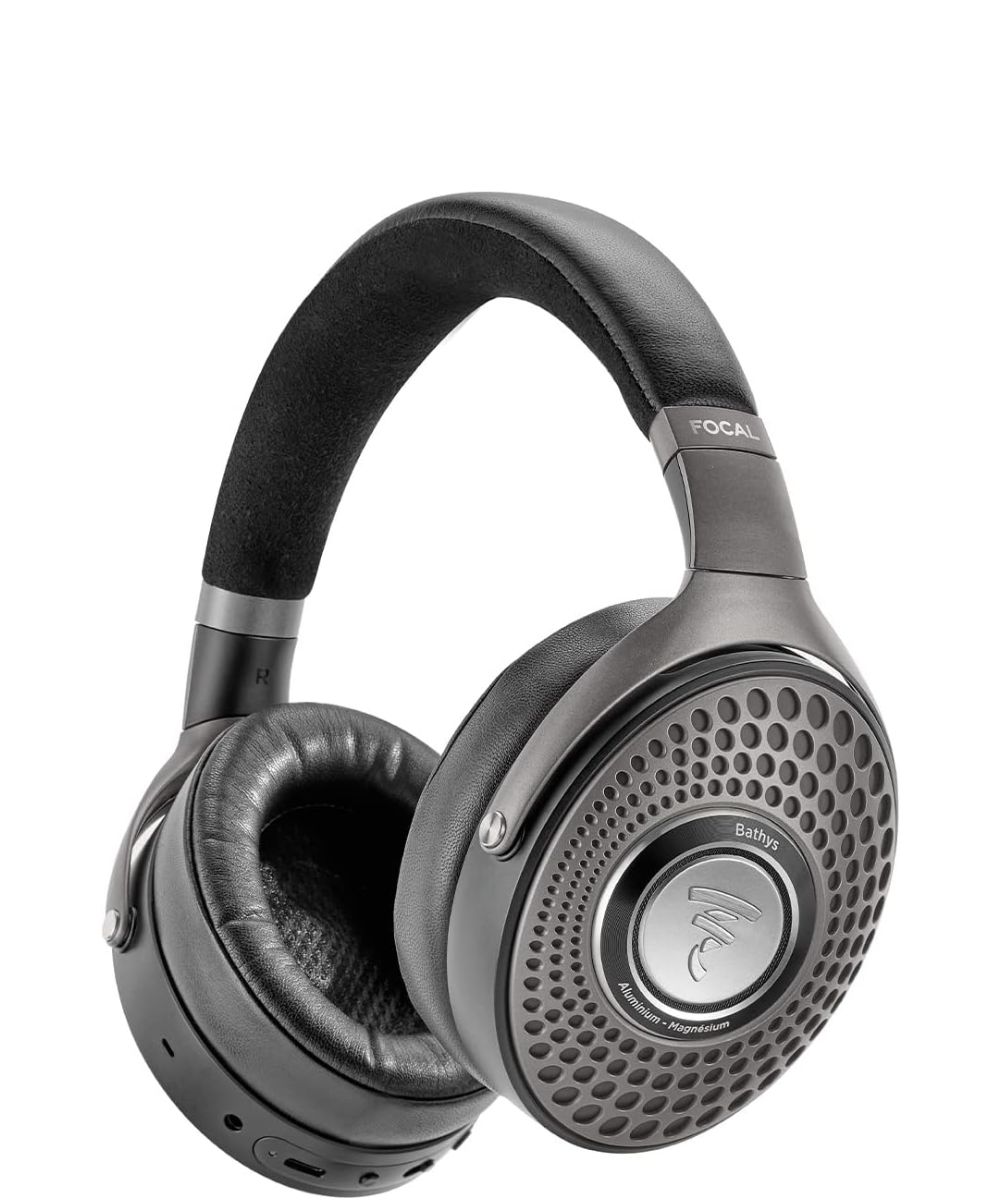
Price ★★☆☆☆
Sound ★★★★★
ANC ★★★★☆
Without hyperbole, the Focal Bathys are the best-sounding Bluetooth headphones I’ve ever used. They cost a small fortune, but you more than get what you pay for with some top-notch noise canceling to boot.
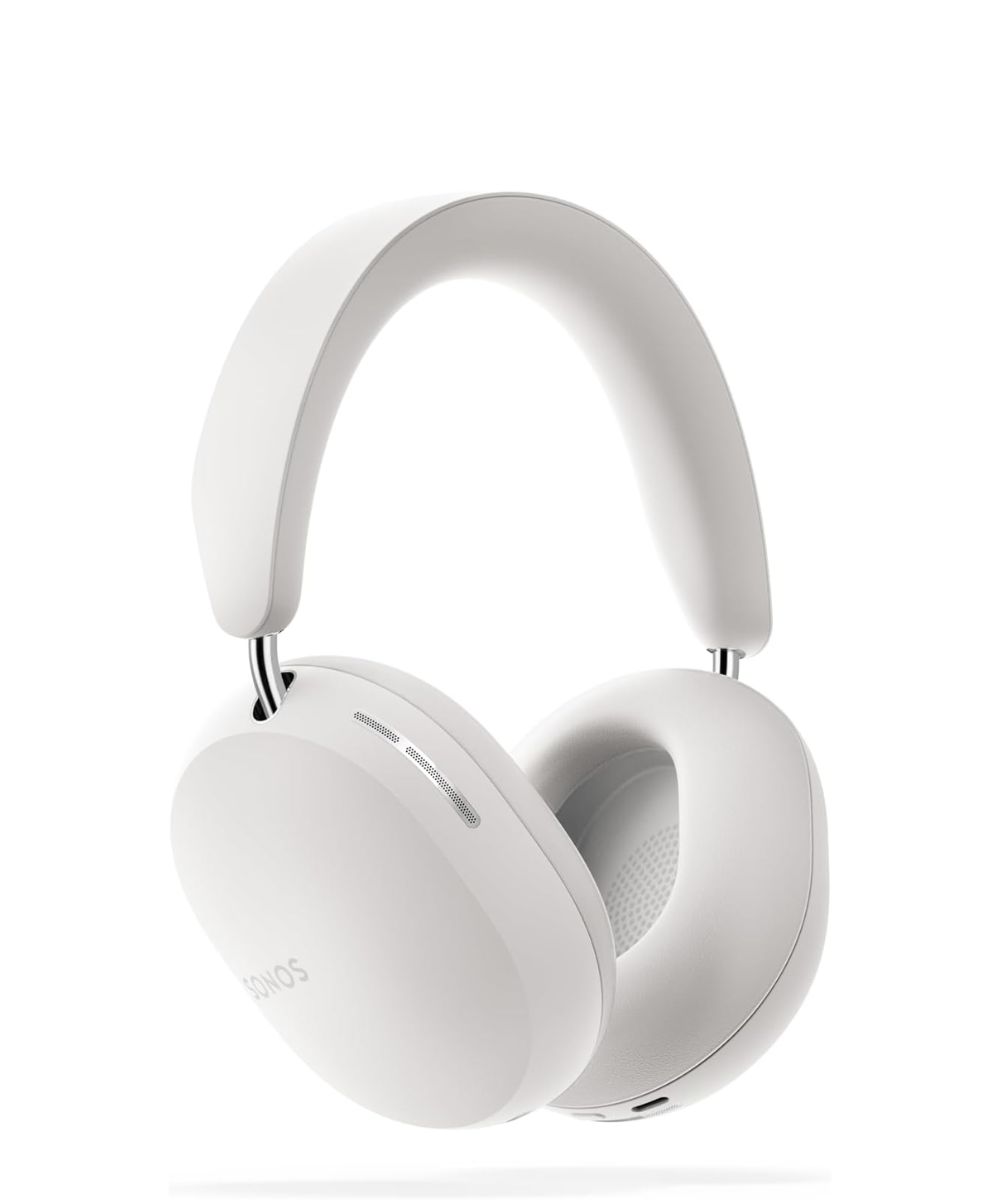
Price ★★★☆☆
Sound ★★★★★
ANC ★★★★☆
Sonos’ first foray into headphones are also some of the best. Their noise canceling is brilliant, but it's the spatial audio performance that sets them apart from the rest. They’re really comfy to boot.
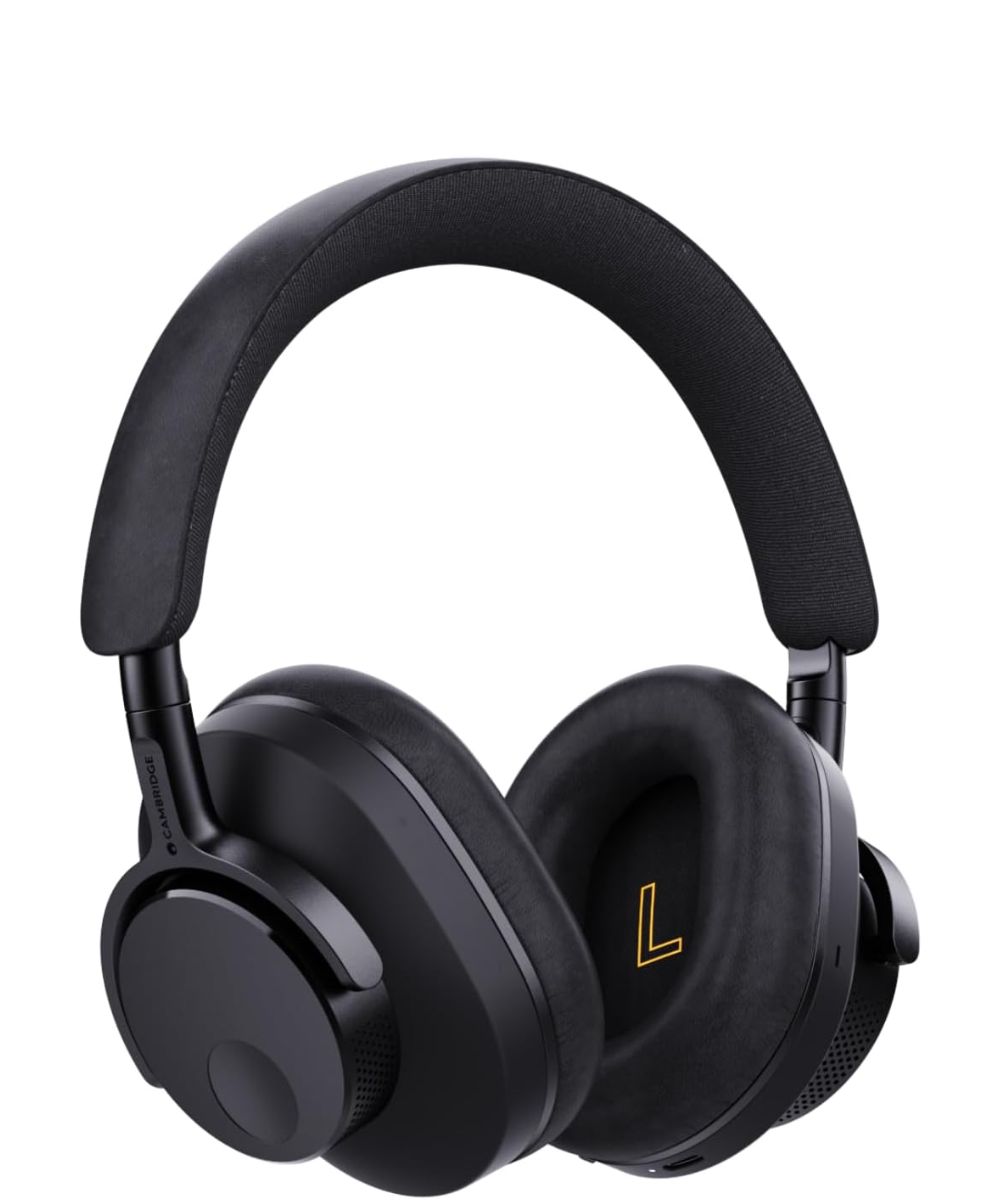
Price ★★★★☆
Sound ★★★★★
ANC ★★★★☆
The Melomania P100 have several features that might land them on the list — but it’s their excellent sound quality that lands them here in the end. They’re a true sonic great from a very established HiFi brand.
About the author

I oversee the audio content that goes up on Tom’s Guide, and maintain the site's buying guides for headphones, wireless earbuds, Bluetooth speakers, soundbars, and more. I have spent more than 20 years testing audio equipment for my own enjoyment, and was previously the audio editor for iMore. There's nothing more I love than jamming out to my favorite tunes on audio gear of different prices and sizes.
Best noise-canceling headphones you can buy right now
Why you can trust Tom's Guide
Best overall
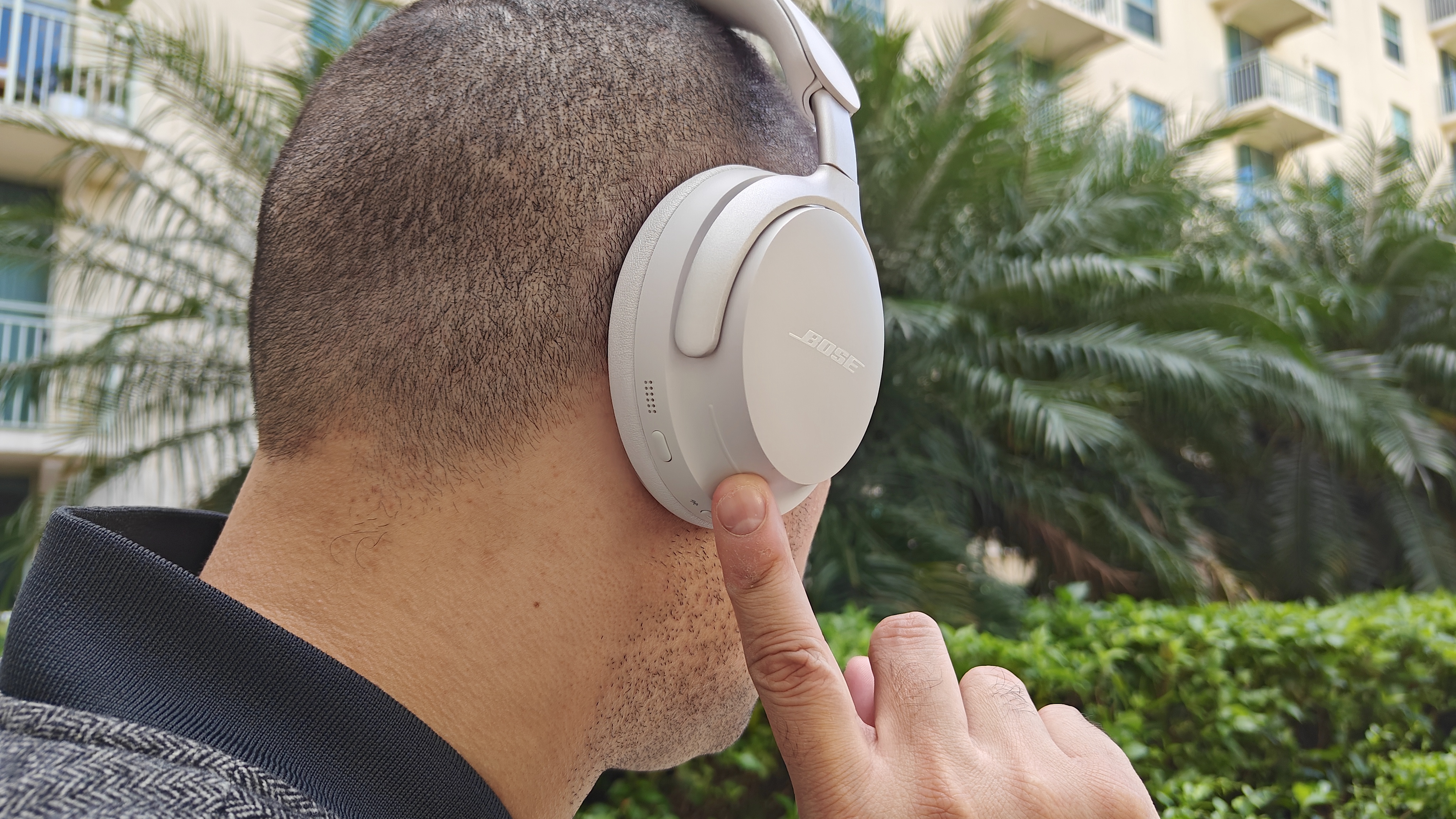

Specifications
Reasons to buy
Reasons to avoid
✅ The best noise canceling that money can buy. Bose is known for its incredible noise canceling, and the QuietComfort Ultra are the best of the best.
✅ The brilliant sound quality. They sound better than any Bose headphones that have come before, with a big, rich signature.
✅ They’re extremely comfortable. The pleather is soft, the foam is supporting, and the headband doesn’t press too hard on your head.
❌ They’re quite expensive. The QuietComfort Ultra cost $449, making them a costly option.
❌ Battery life could be better. They only last for 24 hours, which plummets when you activate their Immersive Audio feature.
The Bose QuietComfort Ultra Headphones are the ultimate noise-canceling headphones. They have a permanent home in my backpack, for example. They make my bus journeys around the city more tolerable, let me focus on work if I head to a cafe or a library to work, and make trips on the train a whole lot easier. It’s all thanks to the ANC on board — and it’s Bose’s absolute best yet.
Slip the headphones on your head, and they activate with a symphonic stab. From there, Bose’s ANC algorithm kicks in, and blocks out all the noise of the environment around you. I found it almost like magic. I’ve used loads of different noise-canceling headphones, more than any one person normally would have done, and I was immediately taken aback by the silence afforded by Bose’s flagship headset. Play some audio and the outside world completely disappears — it’s utterly remarkable. Nothing else manages the same level of environmental silencing, and it’s the reason that they top the list here.
That noise canceling also allows you to really enjoy their deep, bassy sound. As much as I enjoy neutral and analytical sound signatures, the QuietComfort Ultra’s are comforting and warm, like a sonic weighted blanket. There is a dedication to bass here that’s smooth and forgiving, but they never give in to the ‘goodbye high-end’ pitfall that many warm headphones fall into. Instead, they’re still crystal clear, with plenty of clash and edge to cymbals. The mids are beefy and rich, with plenty of dimension to vocal parts and guitar lines. It’s a great sonic performance, and one that I’ve come to really enjoy.
Immersive Audio, the Bose version of Spatial Audio, isn’t my favorite way of widening music’s soundstage, and it tanks the battery when activated. The battery life isn’t incredible either, with the likes of the WH-1000XM5 managing more staying power than the Bose’s 24 hours.
In the end, though, the Bose QuietComfort Ultra top the list here because of their incredible noise-canceling performance. If you want to block out every ounce of the outside world, there’s really nothing better.
- Read the full Bose QuietComfort Ultra Headphones review
Best Under $100


Specifications
Reasons to buy
Reasons to avoid
✅ Their excellent price. The JBuds Lux only cost $79, making them one of the cheapest pairs of noise-canceling headphones around.
✅ The Spatial Audio support. This might be the cheapest way to experience spatial audio on headphones ever.
✅ Excellent battery life. They’ll last you 70 hours with the ANC turned off, and 40 hours with it turned on. That’s more than some of the expensive models!
❌ There’s no carrying case. There’s no way to protect them in the box, so you have to buy one separately.
❌ There’s no support for hi-res audio codecs. There’s no LDAC, so you won’t get the most out of your music streaming services.
You might think that you have to spend loads of money to get noise-canceling headphones, but that couldn’t be further from the truth. Case in point; the excellent JLab JBuds Lux, a pair of noise-canceling headphones that only cost $79. For the price, you won’t find a more comfortable, better-sounding headset.
One of the coolest things that our testing team loved about the JBuds Lux was the Spatial Audio support. That widened the audio of music over a range of different streaming services, and gave Dolby Atmos support for game consoles and other devices. The tester was so surprised by the Spatial Audio in fact that the review was put on hold while they showed it off to the rest of the team, who were equally impressed. Spatial Audio at this price is a massive bonus, and the fact that it’s so good is the cherry on top.
The battery life is another highlight of the JBuds Lux, which gives you 70 hours of battery life without ANC, amongst the very best on the list. If you turn the ANC on then that goes down to 40 hours, but that’s still more than enough to get you through any work day. Speaking of the ANC, we found that it managed to block out a surprising amount of environmental sound, working brilliantly for the bus, the train, or just walking down the street. They’re also really good for office use, making sure that loud, noisy AC units are blocked out and colleagues' keyboards melt away into nothing.
They’re comfortable to boot, and upon first look, you wouldn’t be able to guess that they cost far less than $100. There isn’t an included carrying case, which is a shame, but it’s more than likely a concession made to keep their price as low as it is. And ultimately, it's that super-low price that gets them a solid place on this list.
- Read the full JLab JBuds Lux ANC review
Best Alternative
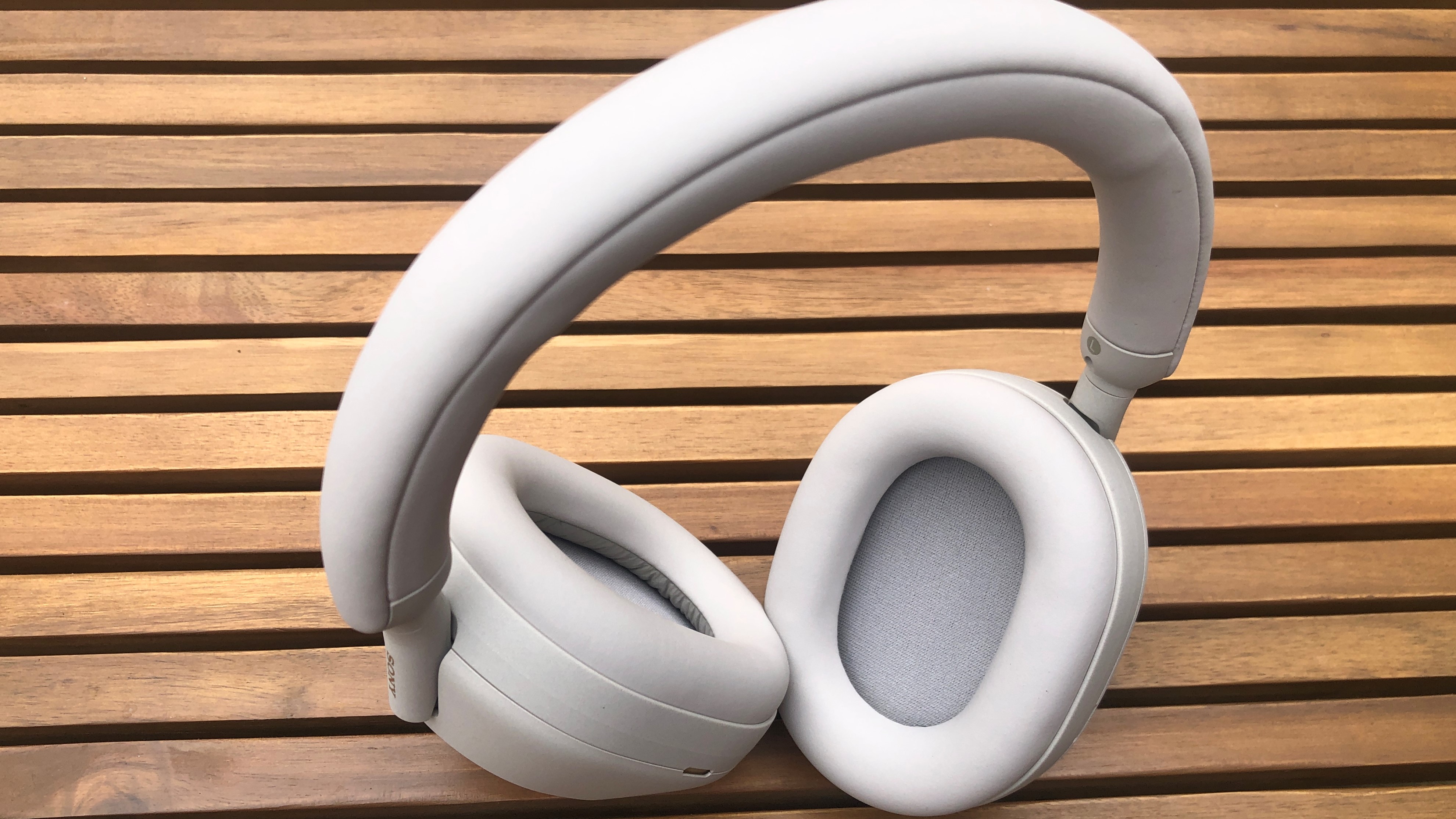

Specifications
Reasons to buy
Reasons to avoid
✅ Their excellent sound quality. They’re not quite the best sounding on the list, but they sound a little better than the Bose.
✅ Their comfortable fit. The WH-1000XM5 are some of the lightest headphones around, and thanks to ample cushioning they’re super comfy.
✅ Their good noise canceling. Sony’s noise canceling might not be quite the same level as Bose’s world-silencing tech, but it is close.
❌ They can get warm in use. We found our ears got hot and sweaty while wearing the WH-1000XM5
❌ They’re more expensive. While not quite the $449 of the QuietComfort Ultra, they’re a lot more than the older WH-1000XM4.
Sony’s noise canceling headphones and their numbery naming solutions are almost as ubiquitous as that of Bose. The WH-1000XM5 are just the latest in a long line of noise-canceling headphones that have graced store shelves, and they’re also the best yet thanks to excellent sound quality, brilliant noise canceling, and a stunningly comfortable fit.
Pulling them out of their environmentally friendly packaging reveals where the extra money over the older model has gone. The case, while larger than that seen previously on Sony products, has a cool squishing mechanism that lets them fit into tighter spaces in your backpack. It’s still protective mind you, so you won’t be worried about damaging your expensive headphones when you take them on the go. We found that while very light, the headphones themselves were also very well built, feeling sturdy and rugged in the hand. There’s no metal here, as you find on some of the alternatives like the AirPods Max or the QuietComfort Ultra, but the plastic used feels top-notch.
It’s when you put them on that the lightweight and premium materials come into their own. They’re remarkably comfortable, with the soft, forgiving foam enveloping your ears and the compliant headband not pressing on the top of your head too much. The only thing we found that might make you take them off occasionally is the warmth that they seem to generate — my ears certainly get slightly sweaty if I leave them on for too long.
At $399, the XM5 are not cheap. But you do get some excellent noise canceling for the price, thanks to Sony’s extensive experience. Its weighted to the low end so engine noise and other more rumbly sounds are all buy completely silenced, but some higher-pitched noises make it through. The tap of my keyboard, for example, occasionally rears its head. They’re otherwise excellent noise cancellers, however.
They’re brilliant soundwise as well, with a neutral sound signature at their core. I really like the way that they sound, with music sounding well-rounded without losing any definition or bite. They sound slightly better than the QuietComfort alternative, in fact, thanks to a more restrained low end.
In the end, both the WH-1000XM5 and the QuietComfort UItra are great options for noise-canceling headphones — but we would say that Bose’s headphones manage to block more noise for the top spot on the list.
- Read the full Sony WH-1000XM5 review
Best battery life
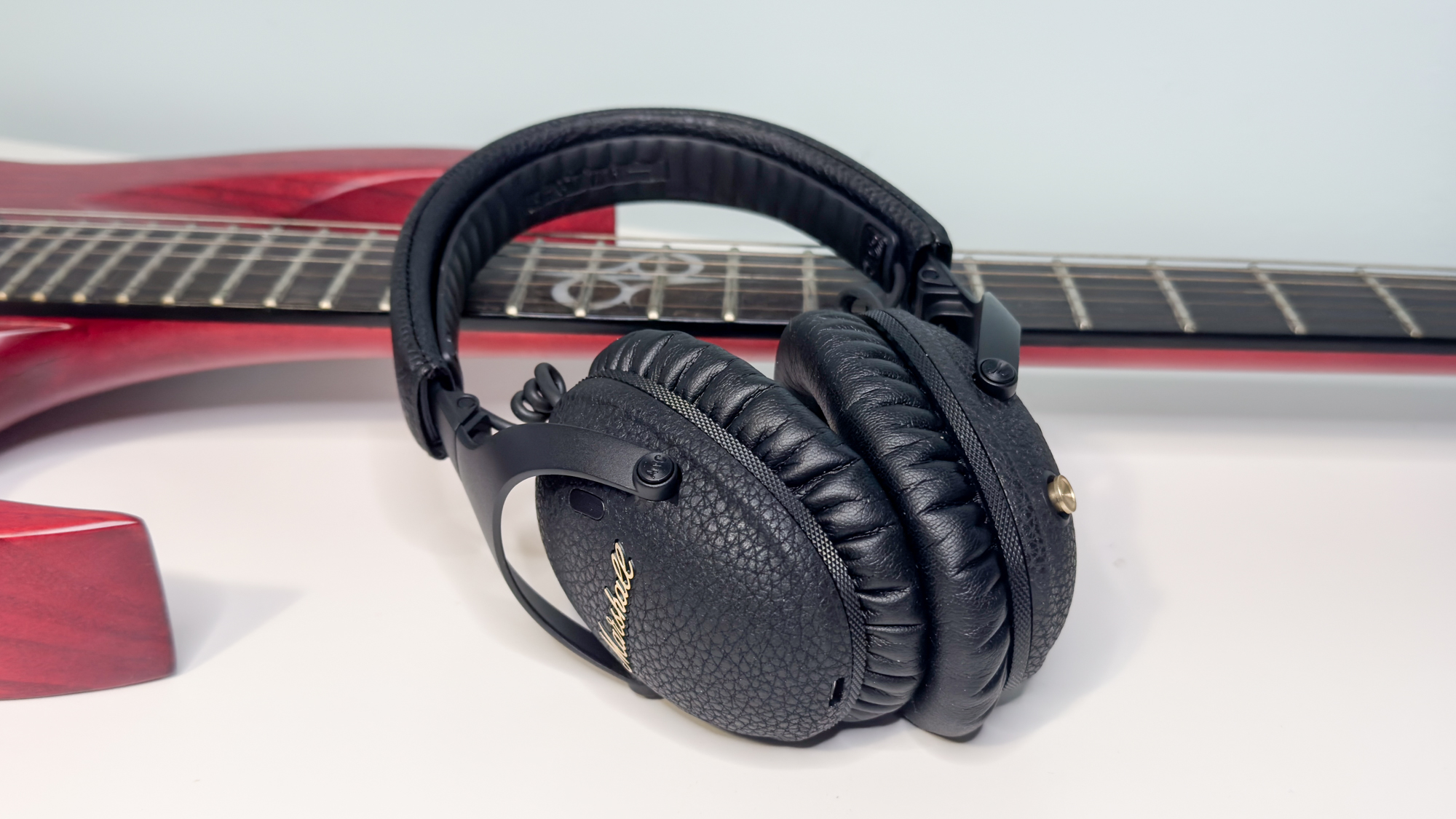

Specifications
Reasons to buy
Reasons to avoid
✅ Their lengthy battery life. This is the longest-lasting pair of noise-canceling headphones we’ve ever seen, netting you 70 hours of battery with ANC on.
✅ A very comfortable fit. Thanks to a very special foam, the Monitor III are supremely comfortable for long periods of time.
✅ Their rakish good looks. Based on the amps from Marshall, the headphones look effortlessly cool.
❌ Some build issues. There are some creaks and rattles to the Monitor III that might put you off.
❌ Half-baked spatial audio inclusion. Marshall’s ‘SoundStage’ feature sounds great on paper, but doesn’t live up to expectations.
The Marshall Monitor III are, without a doubt, some of the most comfortable headphones I’ve ever put on my head. They’re incredibly light, and the new foam that Marshall developed for the earpads is very comfortable around my ears. I could wear these headphones for longer than just about any other headset I’ve ever used — and I can use them for that long thanks to their epic battery life.
Generally, I’d expect a pair of Bluetooth headphones to last about 40 hours with their noise canceling turned off. That’s what the Sony WH-1000XM5 manage, and if they get more than that, then they get more attention. The Monitor III get almost double the 40 hours of ANC-less XM5 use with their noise canceling turned on, with a massive 70 hours on tap. If you turn the noise canceling off, you get a miraculous 100 hours, keeping you from plugging in anywhere near as you might otherwise. My testing got around the stated times, with mid-volume and noise canceling turned on.
But that battery life wouldn’t do you any good if they didn’t sound any good for the 70 hours that you can use them for. Thankfully, they sound really, really good, with Marshall's signature rockin’ sound signature keeping them going. They’re a little less warm than some of the other options on the list, but they have what's called a ‘scooped’ tonality. That chops out some of the mids, giving a signature that emphasizes the bass and the treble. The mids are still excellent, of course, and the whole package sounds excellent.
The ANC lets you listen to it without any disturbance as well, although its not quite as good as that found on the top pick of the list. It will still do a solid job of keeping out the noise of your busy office, or the public transport you might have to take to work. Unfortunately, there are a couple of black spots against the Marshalls. There are some creaks and rattles in the construction, and the version of Spatial Audio that comes baked in should be kept in the ‘off’ position at all times, but overall, the Monitor III are an excellent pair of noise canceling headphones that should end up on your buying list.
- Read the full Marshall Monitor III review
Best Under $200
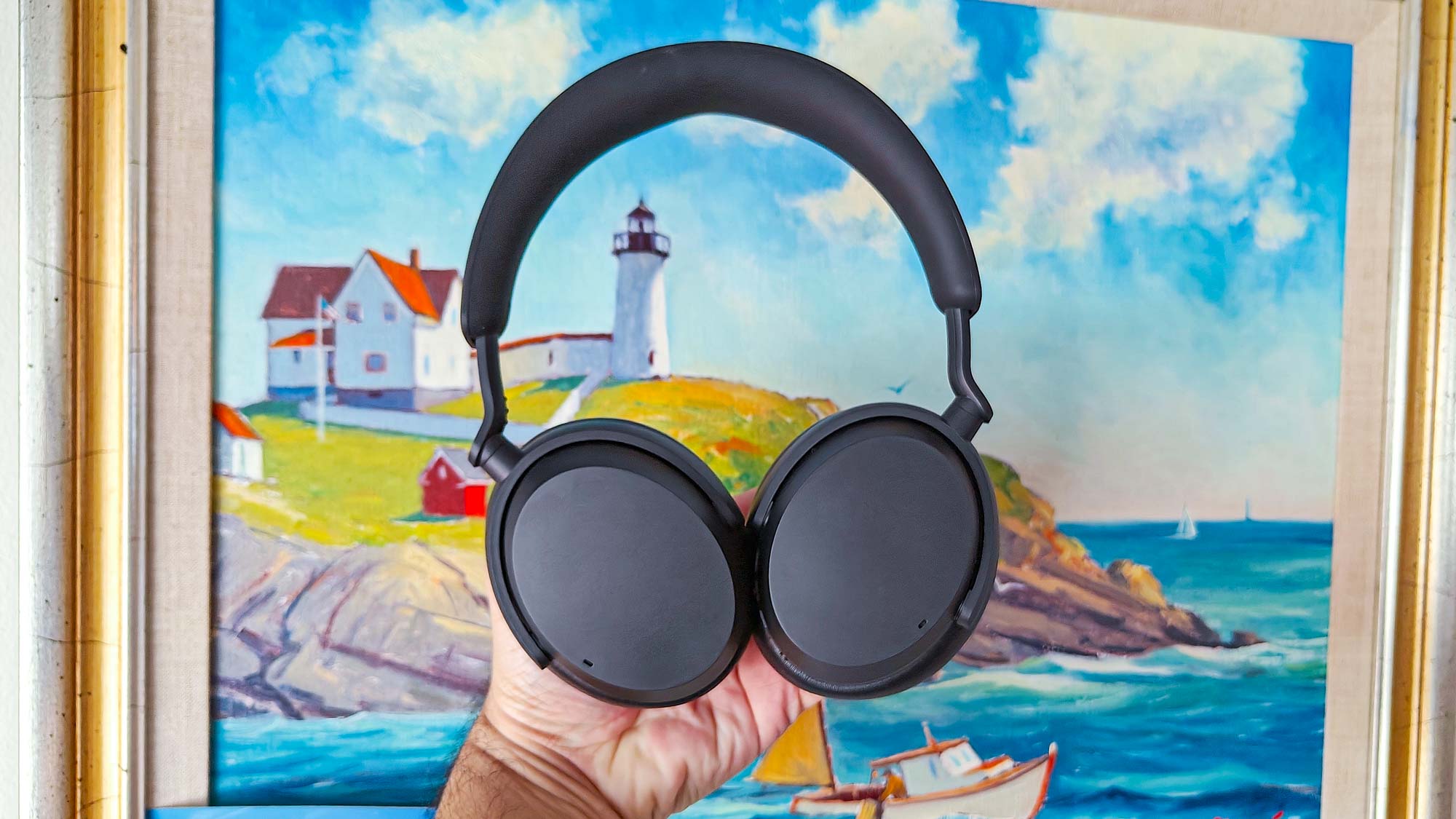

Specifications
Reasons to buy
Reasons to avoid
✅ Great price. The Accentum cost under $200, while delivering premium features.
✅ Excellent sound. They're based on the more expensive Momentum 4 for a great audio experience.
✅ Great battery life. They last for 50 hours with ANC turned on for some great staying power.
❌ No protective case. There's no case in the box, so you'll have to buy one seperately.
❌ They look boring. There's not much design-wise that sets them apart from the other options.
Sennheisers’ Accentum headphones bring a whole host of the premium features of the far more expensive Momentum 4 headphones to a price point that’s a whole lot easier to swallow. While they might not look the most exciting, they sound like something far more expensive, block out plenty of noise, and feature exemplary battery life which beats out headphones that cost over $100 more.
They cost just $179, bringing them firmly under the $200 price point, and they represent the best package overall for the price. We’ve seen that price drop during deals events as well, bringing them closer and closer to $100 every time. Whatever price you find them at, they’re a top-notch buy. Their noise canceling and sound quality are almost completely unmatched for the price, and they have features that more expensive headphones would envy. Our testing found a pair of headphones with a rich, layered soundscape, with the signature detail that Sennheiser has become well known for. That doesn’t mean that there’s no bass — they have a pleasingly warm sound that many are going to like a lot. They sound like something that costs a whole lot more.
The battery life is another highlight. You get 50 hours with ANC turned on from a single charge, which is more than even the Sony WH-1000XM5 and other headphones that in some cases cost more than twice the price. And you’ll want to use them for that long too, thanks to their comfortable fit. The earcups are nice and wide, and while they can get a little hot if you wear them for longer periods of time, they’re great over long periods. The noise canceling is very good as well, with our reviewer finding loads of really loud noises in and around their home blocked out completely. If you take them on the bus or the train, your commute is going to be a whole lot more tolerable.
It would be nice to get a case in the box, but Sennheiser had to make compromises somewhere so that the headphones sound as good as they do for the price. If you’re looking for something that costs under $200, then the Accentum are an excellent option.
- Read our full Sennheiser Accentum Review
Best traveling
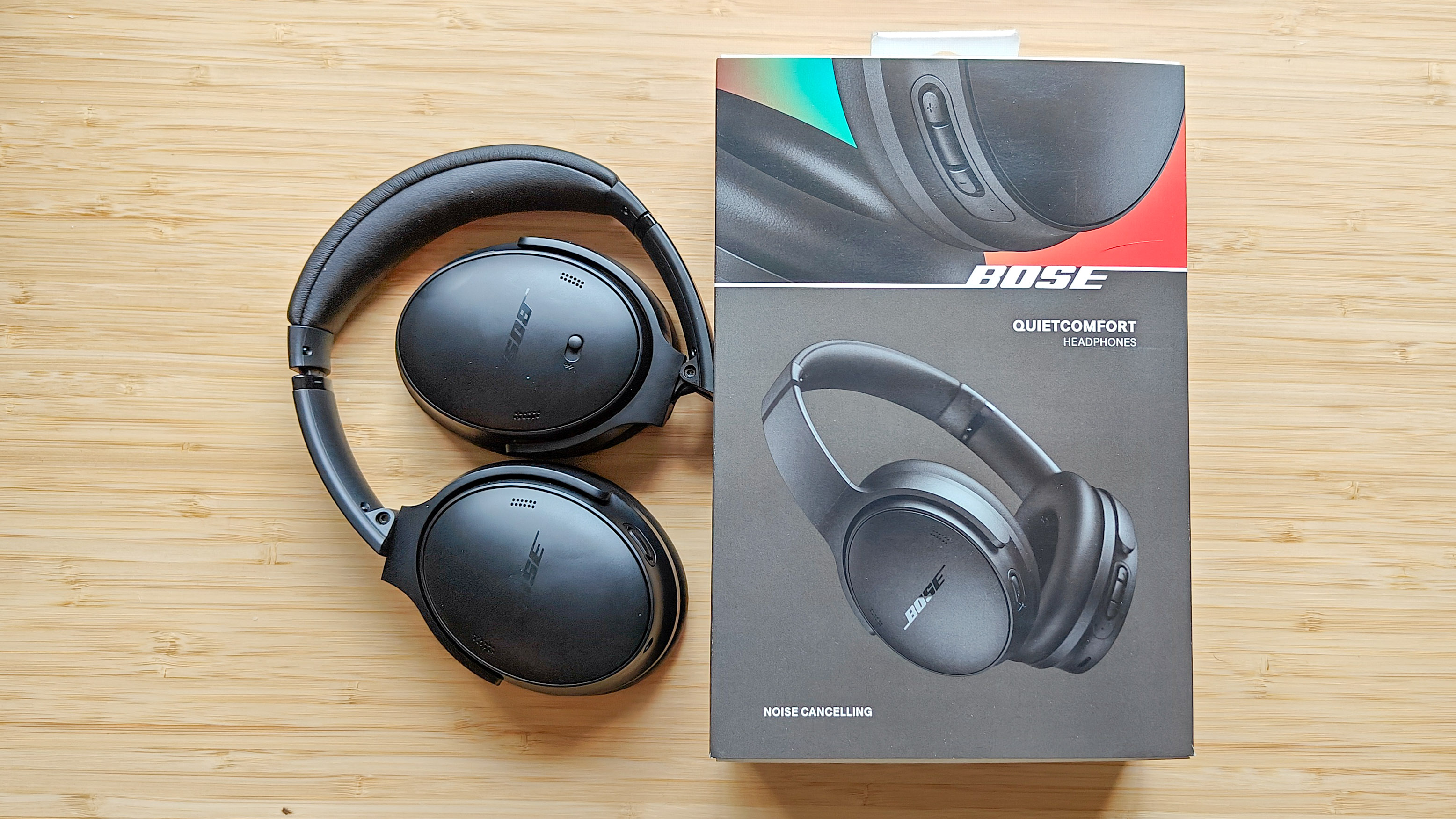
Specifications
Reasons to buy
Reasons to avoid
✅ Excellent noise canceling. Bose’s typical incredible ANC is baked into this slightly cheaper pair of headphones.
✅ Very comfortable. They’re called the QuietComfort headphones for a reason!
✅ Decent sound. While they don’t have the same sound quality as their more expensive cousins, they still sound great.
❌ The noise canceling can’t be turned off. You can only switch to the ‘Aware’ transparency mode, so you can’t save any battery.
❌ There’s no Spatial Audio. If you want to listen to spatialized tracks and Dolby Atmos, you’ll need another headset.
For many, many years, the Bose QC45 were the standard against which all other noise-canceling headphones were measured. That honor now goes to the QuietComfort Ultra headphones, but Bose recognized how important and how good the 45s still are, and so released a refreshed and updated version simply called the ‘QuietComfort Headphones’. For my money, these are some of the best noise-canceling headphones for traveling, on account of their incredible ANC for airplane flights and bus trips. But also because they’re slightly cheaper than their more expensive cousins, you won’t feel quite as bad if they get left behind on the plane.
Their size and weight make them great for traveling as well. They fold down and slip into a great hard case, so you won’t have to worry about tossing them in your travel bag. The size means they fit more easily as well, taking up less space than the competition.
The noise canceling is the star of the show, of course. They’re a pair of Bose headphones, so they do an incredible job of keeping the outside world at bay. Rumbling bus engines disappear into nothing, wooshing planes melt into the background, and walking around a city becomes a whole lot more relaxing. They’re not quite as good as the top-of-the-range QuietComfort Ultra, as you might expect, but the noise canceling is still some of the best in the business.
There was a time when Bose wasn’t regarded well for its sound quality, but its recent products have completely smashed that claim out of the water. The QuietComfort headphones bring a great sonic upgrade to the QC45s, with our testing revealing a warm, comforting sound signature to the table. That does mean that some clarity is lost in the top range, but they’re still a great listen for a range of different genres. Listening to Cream’s Sunshine of Your Love revealed a vocal forward representation, for example. They might not reach the same level as the Sony WH-1000XM5 or the QuietComfort Ultra, but they still sound great.
Battery life could be slightly better. We found the 24-hour battery life claim was slightly overestimated during our testing, and we were disappointed that you can’t turn the ANC off at all to save the battery. Instead, you can switch between the noise-canceling and ‘Aware’ modes, to hear the outside world. That means there’s no way to extend the battery life, unfortunately.
- Read the full Bose QuietComfort Headphones review
Best premium
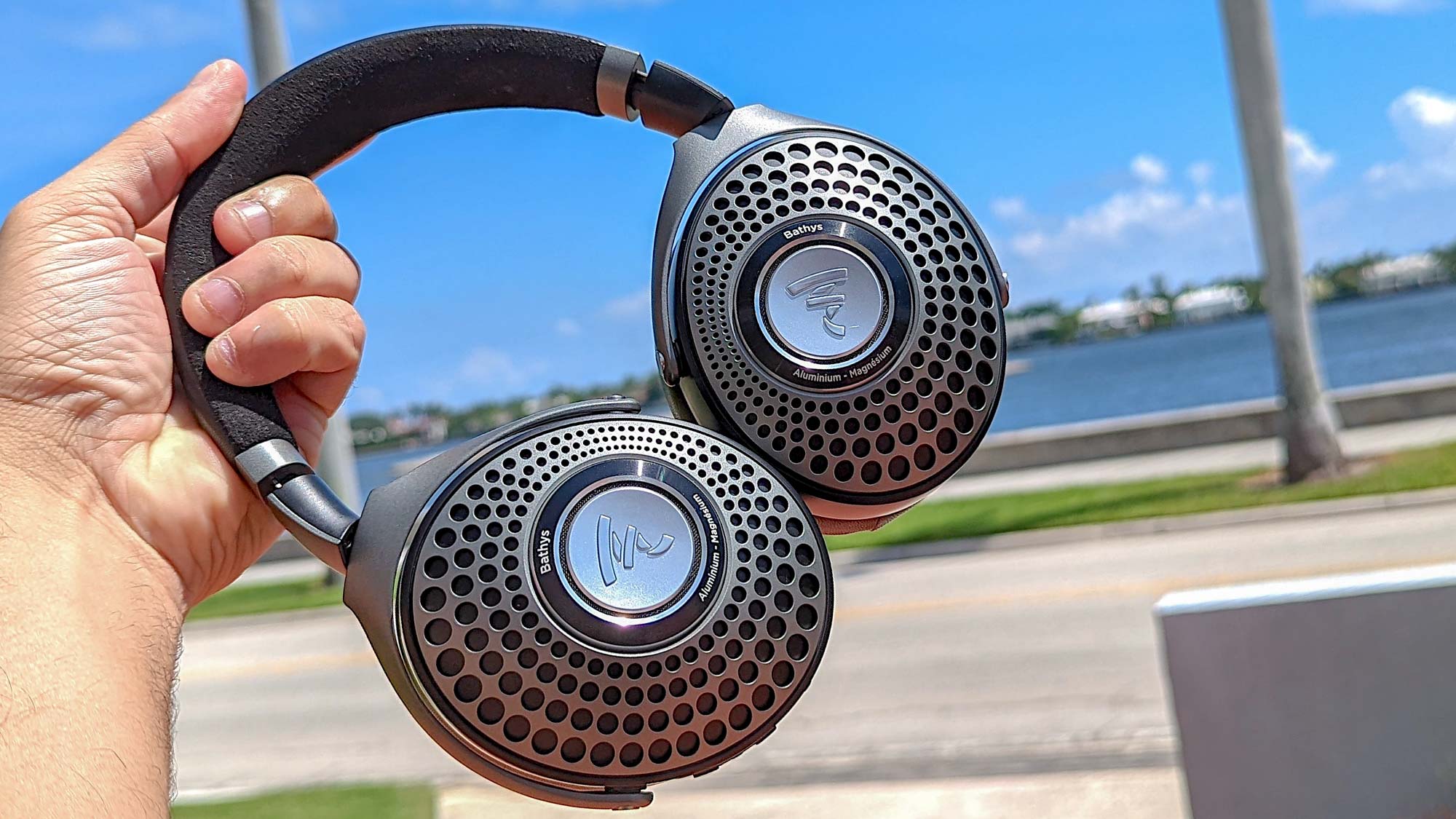

Specifications
Reasons to buy
Reasons to avoid
✅ They sound absolutely sublime. There really is nothing that sounds quite like the Focal Bathys.
✅ They’re extremely comfortable. I could wear my Bathys for hours and hours on end.
✅ They look amazing. With their cool earcup design, they look unlike any other pair of headphones around.
❌ They’re very expensive. A pair of Bathys will cost you around $799 for one of the most expensive pairs of headphones around.
❌ Their noise canceling isn’t the best. It’s not bad by any stretch of the imagination, but it’s not as good as some of the competition.
The Focal Bathys might be my favorite pair of noise-canceling headphones. I adore the way that they feel on my head, thanks to their memory foam earcups, coated in lambskin leather. The soft, pliant headband that doesn’t press too hard on the top of my cranium. The perfect clamping force that keeps them solidly on my head no matter how much I might headbang, the noise canceling that gets rid of the pesky air purifier wiring away in my office. They might not block out as much noise as the likes of the Sony’s or the Bost option, but they more than make up for it in the sound department.
Pulling them from box reveals a sturdy carrying case, perfect for making sure that your expensive pair of headphones stays protected if you decide to take them out of the house. The headphones are found folded flat inside, ready to be placed on your head. Turn them on with the little switch on the earcup, and the ANC kicks in, and they connect to your chosen Bluetooth device.
I found the ANC to be adequate, but nothing to write home about; a sentiment echoed in our review. It does an admirable job at everything you might want from ANC, like blocking out loud city streets and annoying clacking keyboards at work. It doesn’t do any better than that found on cheaper headphones, however, so if you’re looking for out-and-out silence you’ll want to look at one of the other picks on the list.
The ANC lets you enjoy the sound quality a whole lot more as well. And what sound quality it is — well rounded, perfectly neutral, whilst retaining a richness that some audiophile headphones forgo in favor of crisp analysis. Sylosis’ Blackened Skyline for example shows of some remarkable snarl and bite, the guitar solos soaring and impressive while the bass guitar dances in the background. Making the sound even better is the DAC mode, which uses a built-in audiophile DAC to improve the sound of your music when connected over USB-C. It works a treat, and brings more body to proceedings without covering over the treble.
The materials used in construction are super premium as well, including heavy-weight plastic, sturdy metal, and sumptuous leather. The design is an interesting one as well, echoing Focal’s incredibly expensive wired headphones with its cascading circles design. The Focal Bathys might be extremely expensive, but you more than get what you pay for.
- Read the full Focal Bathys review
Best for spatial audio
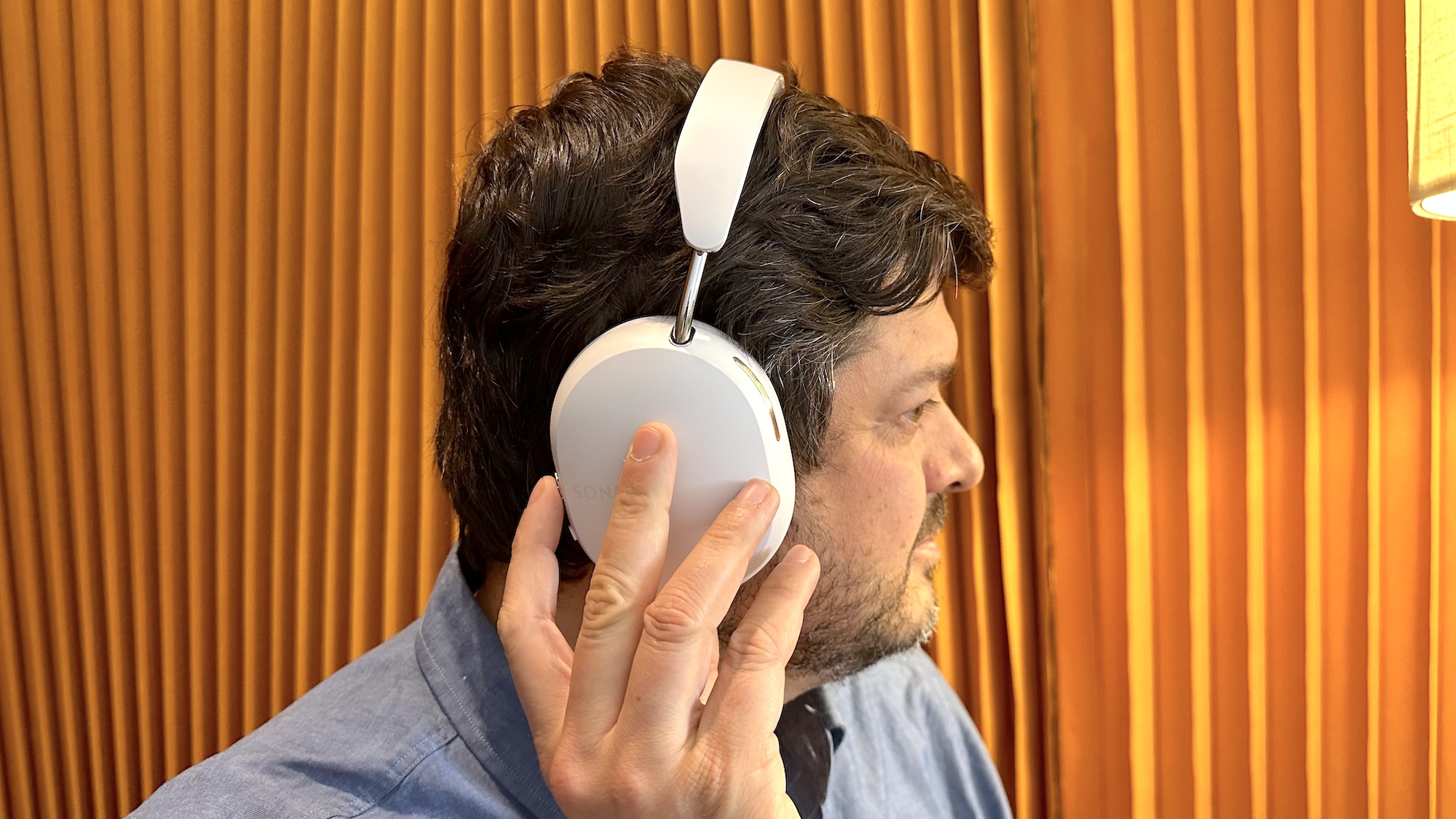

Specifications
Reasons to buy
Reasons to avoid
✅ The best Spatial Audio performance. Sonos has used every ounce of its home-cinema chops to give the Ace a great surround sound experience.
✅ They connect to your Sonos soundbar. Then you can listen to your TV audio on your headphones.
✅ A slick industrial design. The Sonos Ace have a unique, sleek aesthetic that sets them apart.
❌ They’re more expensive than the closest competition. They cost more than the Sony’s, and around the same as the Bose.
❌ High clamping pressure. The Sonos Ace press slightly harder against your ears, so they might get fatiguing after longer listening sessions.
Sonos’ foray into the headphone game was a long-awaited one. Having created nothing but Wi-Fi-connected speakers for years, the firm's move to wearable audio was extremely highly anticipated, and while there were a couple of things that Sonos faithful might miss, they were a largely successful first-generation product for the audio giant. My pair sees heavy rotation in my headphone collection, for one, and it’s mostly down to their sublime Spatial Audio performance.
Using a range of different streaming platforms with Dolby Atmos built-in, including Apple Music and Amazon Music Unlimited, I (and our reviewer) was immediately impressed with the soundstage on offer thanks to the surround sound performance of the Sonos Ace. Instruments are well spaced out, and each member of the band is placeable around you. I could pick out the two guitarists of Behemoths’ Off to War perfectly, while Nergal’s terrifying growls enveloped me in a sinister, uncomfortable blanket. It works fantastically for movies as well, giving the full Dolby Atmos effect during my watch of Dune Part 2.
Of course, good Spatial Audio would mean nothing without some great sound quality, and thankfully, the Ace are no sound slouch. They are perhaps slightly less warm than the likes of the Sony or Bose alternatives, but they pack a punch that not many other options on the list can match. You can tune the sound in the app as well, although I found it to be slightly limited during use. Not that it really matters in the long run, because the stock tuning is still excellent, and most won’t need to change anything.
The app is one of the most disappointing parts of the headphones. Given the rest of the Sonos lineup uses Wi-Fi to wirelessly transmit higher-quality audio, you would have thought the Sonos Ace would too. Alas, they do not, instead relying on the lossy Bluetooth connection. There are also some small issues with the fit. While the earpads are lovely and soft, and the headband supportive, the clamping force that keeps them on your head is a little too tight. That caused a problem for me, as after longer listening periods, they started to press my cartilage piercing into the side of my head, causing some discomfort.
Both of those issues are very easy to overlook, however, when you listen to their remarkable Spatial Audio component, however, and they are easily still one of the best pairs of noise-canceling headphones around.
- Read the full Sonos Ace review
Best sound quality
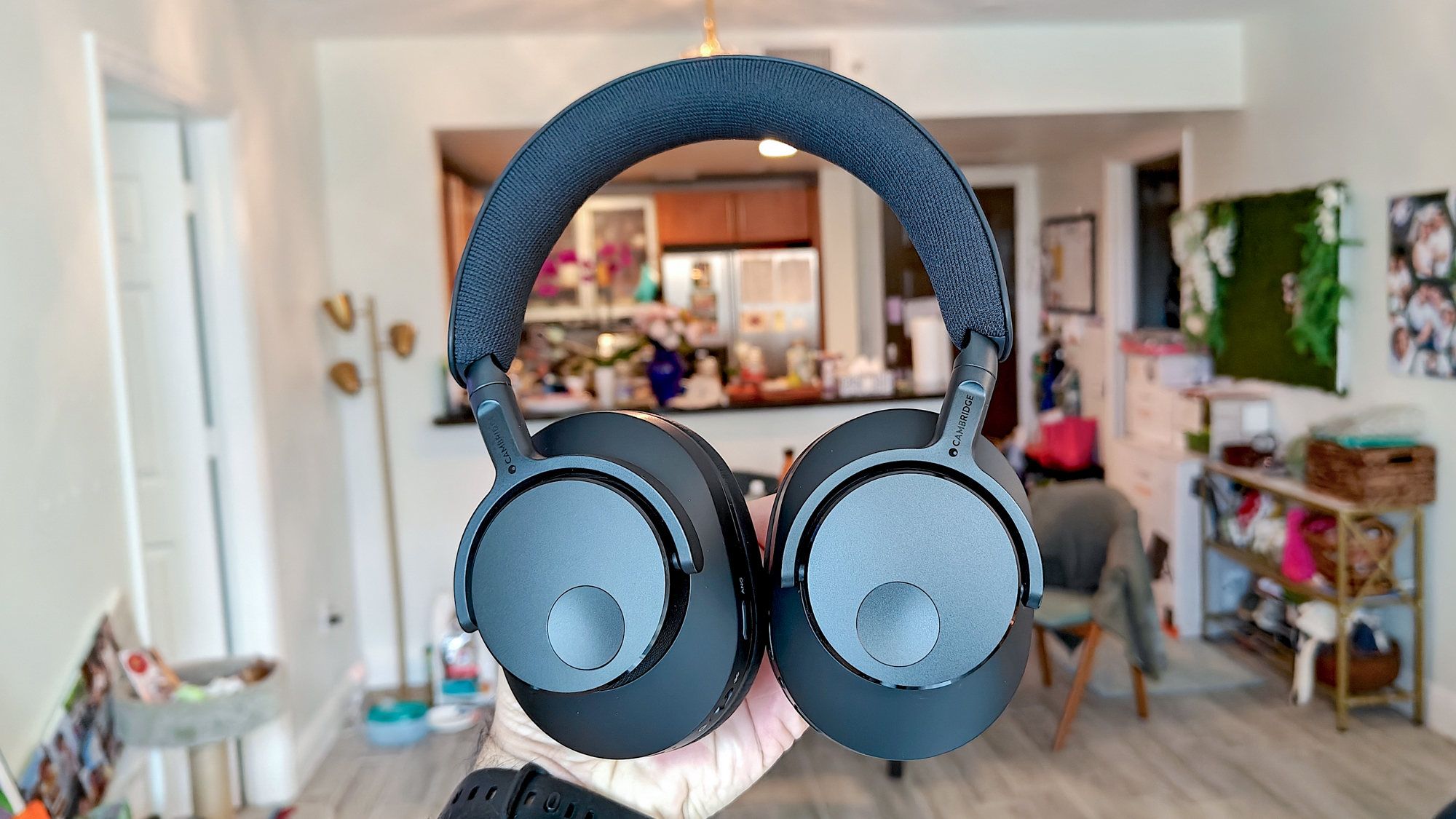

Specifications
Reasons to buy
Reasons to avoid
✅ Sound quality that outweighs the price. There’s nothing under $300 that sounds as good as the Melomania P100.
✅ A great app. Cambridge Audio’s headphone app is amongst the best, and allows for loads of customization.
✅ Their price. Considering their noise canceling and impeccable sound quality, they feel like they should be a whole lot more expensive.
❌ They’re not the most comfortable. They’re quite heavy, and their clamping force is very strong.
❌ Transparency mode could be improved. While the noise canceling is good, the transparency mode could be better.
Cambridge Audio has been making HiFi gear since the 60s, although the Melomania P100 are the firm's first attempt at a pair of over-ear headphones. In the P100, Cambridge Audio has created one of the best-sounding pairs of Bluetooth headphones not just for the price, but in general; but there are some concessions you have to make to get the all-conquering sound quality.
But before the sound, the P100 are packed with character that’s lacking from a lot of the competition. While they might not be the most interesting-looking pair of headphones, they are environmentally conscious thanks to replaceable earpads and batteries, making them last a whole lot longer than other options. Then there’s the voice assistant on board. Anyone who’s watch TV shows like What We Do In The Shadows will instantly recognize the voice of Matt Berry, who does the narration for the various voice confirmations in the headset. Activate the noise canceling, and Matt shouts ‘Noise canceling!’ in his signature London lilt, or put them in gaming mode and he croons ‘gaming mode’ at you. It’s fun, and given how many other headsets either have confusing noises or a generic voice for audio confirmation, it sets them apart from the competition.
But back to the sound quality. I found it controlled, measured, and well-judged throughout my listening, and I enjoyed every second of testing. Songs like Animals as Leaders Physical Education showed an impressive stereo soundstage, while demonstrating excellent layering and restraint. But to keep them enjoyable, there’s still a certain level of warmth that makes sure they never get too analytical — it’s a very good performance that makes them feel at least $100 more expensive than they actually are.
My biggest complaint, and our reviewer's too, is how the headphones feel on the head. They aren’t a light headset, and the headband is slightly too hard. Combine that with a very firm clamping force and they can start to get uncomfortable after a few hours. Transparency mode is also disappointing, but the noise canceling more than makes up for it. It manages to outperform some of the more expensive options out there, blocking out a great deal of annoying noises. Battery life is good too, and I found myself getting the advertised 60 hours of use with ANC turned on. A stunning headset at a great price.
- Read the full Cambridge Audio Melomania P100 review
Specs compared
| Header Cell - Column 0 | Connectivity | Weight | Battery life (rated) |
|---|---|---|---|
| Bose QuietComfort Ultra Headphones | Bluetooth 5.2 with SBC, AAC, and aptX Adaptive | 8.96 ounces | 24 hours (ANC on) |
| JLab JBuds Lux ANC | Bluetooth 5.3 with SBC, AAC | 8.2 ounces | 40 hours (ANC one) |
| Sony WH-1000XM5 | Bluetooth 5.3 with SBC, AAC, LDAC | 8.8 ounces | 30 hours (ANC on) |
| Marshall Monitor III | Bluetooth 5.3 with SBC, AAC, LDAC | 8.8 ounces | 70 hours (ANC on) |
| Cleer Enduro ANC | Bluetooth 5.0 with SBC, AAC, aptX Adaptive | 10.6 ounces | 60 hours (ANC on) |
| Bose QuietComfort Headphones | Bluetooth 5.1 with SBC, AAC | 8.32 ounces | 24 hours (ANC on) |
| Focal Bathys | Bluetooth 5.1 with SBC, AAC, aptX Adaptive | 12.3 ounces | 30 hours (ANC on) |
| Sonos Ace | Bluetooth 5.4 with SBC, AAC, aptX Adaptive and aptX Lossless | 11.4 ounces | 30 hours (ANC on) |
| Cambridge Audio Melomania P100 | Bluetooth 5.3 with SBC, AAC, aptX Lossless | 11.6 ounces | 60 hours (ANC on) |
Also tested...
As Tom's Guide's audio experts, we test a lot of noise-cancelling headphones but some models don't make it into a buying guide. That's not to say that they're not great performers, just that they're beaten by rival models with a stronger set of features or performance. The picks in this guide are the very best we've tested and have all been given full reviews. But with more models to choose from than ever, we want to make sure that you consider these also tested options. These alternatives have been through our rigorous testing processes but didn't quite make the grade to rank among the best of the best.
Bowers & Wilkins Px7 S2e: An 'evolved' version of the company's entry-level headphones, these feel just as good as their predecessor and look identical. They take inspiration and learnings from the company's Px8 flagship headphones together with a re-tuned acoustic performance and 24-bit digital signal processing (DSP).
In my review, I particularly liked the bass kick they brought to my music, which had a bit more energy than many of their price rivals. The rest of the frequency range felt nicely judged, and noise canceling was effective but not the strong enough to out-class similarly priced models in this list.
Bose 700: Superseded by the Bose QC Ultra Headphones awarded the best noise-canceling headphones overall, the 700s were the previous top-ranking model, and maintained that position for more than three years. They are no longer listed on the Bose website, but the 700s continue to be available via online retailers where they can be found discounted. Despite being an older model, these stand up well to rivals and boast 10 levels of ANC that works flawlessly to silence the majority of external sounds. Most importantly, the 700s achieve this without compromising sound quality, allowing listeners to enjoy clean, well-balanced sound reproduction, although the slightly deficient lower frequencies may leave bass fiends feeling short changed. Bose’s companion app lets you adjust the EQ for personalized audio, though.
Read the full Bose 700 review
Yamaha YH-L700: These are an excellent-sounding pair of noise-canceling headphones that have a better 3D sound experience than the AirPods Max. They're equipped with accurate head-tracking technology and multiple well-engineered listening modes for different content. Even with spatial audio turned off, these headphones produce spacious sound with full bass presence, delivering rich lows, palpable mids, and crisp highs. And though Yamaha’s ANC won’t match what Apple, Bose, or Sony offers, it’s still effective to enjoy premium sound in most environments.
You just have to live with its large, heavy design and uneven battery life, which fluctuates when listening with 3D enabled.
Read the full Yamaha YH-L700 review
JBL Live 770NC: JBL's mid-range headset might not win any 'best of' awards, but they excel in one key area — bass. The 770NC have some very powerful low end that rivals the flagship options, giving them plenty of impact when you listen to your music. They look good too, with a cool, modern aesthetic and some classy color options.
It's ANC we're interested in here though, and they're great for blocking out a range of different noises whether you're on the bus or in an office. They are comfortable thanks to their thick padding as well.
Read the full JBL Live 770NC review
How to choose
What to consider when buying the best noise-canceling headphones
Active vs passive noise canceling.
Every single pair of headphones on the list uses ANC, or ‘Active Noise Cancelation’. This uses a series of microphones and a clever algorithm to block out the sounds of the outside world so that you aren’t disturbed by the noises like loud engines, constant tire woosh, or other environmental sounds. These are going to give you the best performance, which is why they’re the only kind that appear on the list. Passive noise canceling is the extent of noise that a pair of headphones might block with the use of ANC — this won’t be as much as a dedicated algorithm and set of noise-canceling microphones.
Battery life
Battery life in noise-canceling headphones has come on leaps and bounds in the last few years. There are some headsets, like the Marshall Monitor III that last as long as 70 hours with ANC turned on, although you’ll mostly find battery life of around 30 hours on the flagships from Sony and others. Generally, if you’re not getting 20 hours out of a pair of headphones, I’d recommend avoiding and choosing something else.
Sound Quality
Previously, sound quality would have been affected by the noise canceling, although that’s becoming less and less a problem as manufacturers work their profiles around ANC tech. You will often hear a low-level hiss with ANC, however, as the ANC tries to counteract the noise of the outside world.
Design & fit
There’s more to the design of a pair of headphones than just the way that they look. After all, styling decisions can sometimes affect the comfort of the headphones, and how they might fit. Generally, most headphones now will use some form of memory foam in their earpads, and breathable materials to make sure they don’t get too hot. If you’re not sure, head to your local headphone stocking store and try some headsets on to see what you like.
Price
As much as it’s always good to get a good deal, there are some things that you need to pay to get. If you want the best thing ever made, you have to pay the outlay to get it. Similarly, if you want something super cheap then there are concessions that you have to make so that you can save money. That’s not to say there aren’t some cheaper options out there — the JBuds Lux are excellent for under $100, for example — but you can’t expect them to hold a candle to something that costs 5x the price. We’d recommend sticking with established brands as while you might pay more, you’ll generally get a much better pair of headphones.
How we test
The best reviews criteria carried out by audio experts
We spend thousands of hours every year testing noise-canceling headphones to make sure that they’re worth your money. We test every single pair of headphones that comes across our testing tables with strict criteria, while also making sure that we consider who might be using them, what they might be using them for, and what they might want from them. After all, while one person might want a pair of headphones that’s perfect for their office, another might want some that are going to serve them better for an hour-long commute on a metro train. We make sure we test the headphones in a variety of different environments where they might find themselves for a more holistic testing approach.
Of course, one of the most important parts of any pair of headphones is going to be the way that they sound. We test the headphones with a variety of different genres, from heavy metal to classical, and evaluate their audio performance accordingly. We also listen to podcasts and watch movies where applicable for a greater picture of the headphone's audio quality.
Durability is important as well. Cases should be able to withstand some punishment and wireless headphones should be able to leave the house without concern, so we make sure to test the speakers in all different use cases so that we know how they’re going to fare in the real world. How does the hard case hold up to being packed into a backpack? What happens if the headphones fall onto the office floor? We want to make sure that your headphones will survive normal, everyday use.
Then we check their comfort. Throughout testing, we wear the headphones while we work, while we commute, and while we relax to make sure that they’re comfortable enough for longer periods of use. We make note of our experiences so that we can talk about it in our reviews — and so that you know if you’ll be comfortable wearing them.
Battery life is another important thing for us to test. We charge the headphones up to full, turn on the ANC, and then run them down completely with a timer on to make sure that the manufacturer's claims are accurate. Then, we test based on higher volume levels and with different levels of ANC to see how using them can affect the battery, and whether they last long enough for a recommendation.
Once we’ve finished testing, and the review is written, the headphones are marked on our five-star system. A 1-star pair of headphones should be avoided at all costs. A 2-star pair of headphones works, but there are much better options out there. A 3-star pair of headphones is a good pair, but you should consider some of the competition as well. A 4-star pair is an excellent set of headphones, with very few issues. A 5-star rating is reserved for perfect products, that don’t have any drawbacks. They should be at the top of your consideration list.
Check out how we test for information about our testing process.
More from Tom's Guide
Sign up to get the BEST of Tom's Guide direct to your inbox.
Get instant access to breaking news, the hottest reviews, great deals and helpful tips.

Tammy and her generous collection of headphones have found a new home — Tom's Guide! After a two-and-a-half-year stint as iMore's resident audiophile, Tammy's reviews and buying guide expertise have more focus than ever on Tom's Guide, helping buyers find the audio gear that works best for them. Tammy has worked with some of the most desirable audio brands on the planet in her time writing about headphones, speakers, and more, bringing a consumer focussed approach to critique and buying advice. Away from her desk, you'll probably find her in the countryside writing (extremely bad) poetry, or putting her screenwriting Masters to good use creating screenplays that'll never see the light of day.
-
sexylady_lioness Hi Sherri,Reply
I would like the noise cancelling headphones, not to listen to music, but to block out all noise, so I can concentrate and study, and to tune out background noise while at work. My question is, re this headphones, must I listen to music/audio in-order to tune out all noise? If I do not want to hear any sound - including music - is that possible ? or the headphones silence works only to tune out noise while listening to audio?
Also, which one is the best re no noise AND no white noise OR hiss?
Thanks in advance. -
jack_straw Reply21457753 said:Hi Sherri,
I would like the noise cancelling headphones, not to listen to music, but to block out all noise, so I can concentrate and study, and to tune out background noise while at work. My question is, re this headphones, must I listen to music/audio in-order to tune out all noise? If I do not want to hear any sound - including music - is that possible ? or the headphones silence works only to tune out noise while listening to audio?
Also, which one is the best re no noise AND no white noise OR hiss?
Thanks in advance.
I use noise cancellation in the same scenarios as you are looking for help in (blocking noise while working or concentrating on studies).
TL;DR: Bose QC35s work best for me. They're comfortable enough for all-day use, and have about the same noise cancellation as the best from Sony. I noticed a very slight hiss only from the Sonys when there was no music/voice playing.
I used Sony's 1000XM3 for a while, and also tried Bose's QC35, since they had the highest ratings for noise cancellation. What I found was that the Sonys seemed to do a ever-so-slightly better job at noise cancelling, but they just were not comfortable for long-term usage. I've been much happier with the Bose QC35s because I can wear them 10+ hours per day without any pain or discomfort. The headband of the Sonys would slowly begin to hurt after 2-3 hours, and the earcups were not as comfortable, especially the lower part that pressed a little to hard behind my jaws. These may sound like minor issues, but when you wear headphones all day every day to block noise, comfort becomes a big issue.
As for hissing, I don't hear any from the Bose, but I hear a slight hiss from the Sonys. If you get the Bose, be sure to update the firmware on them, because there was an older firmware that had issues with hissing. -
Rastafarius I beg to differ with you on the Sennheiser HD 4.50 BTNC Wireless Headphones on only one statement, but a very important one. "omfortable fit"???? I am willing to bet big money you didn't wear those headphones for much more than 10-15 minutes. I bought a pair late last month, and they are not only uncomfortable sitting on top of my ears (only a midget could fit his ears inside those ear cups) from the moment I put them on, but cause sufficient pain in my left ear to force me to take them off after I have worn them for something like 1 1/2 hours. Take a look at the reviews on Amazon, at least half of which talk about what a shame it is the ear cups aren't bigger and more comfortable. In fact, every review I looked at of the HD 4.50 BTNC headphones criticized their comfort. I'm sending the headphones I bought back. They were quite clearly made for people with half my stature. I have a pair of Corsair HS70s that don't have quite the same sound quality as the Sennheisers, but still work just fine for me.Reply
